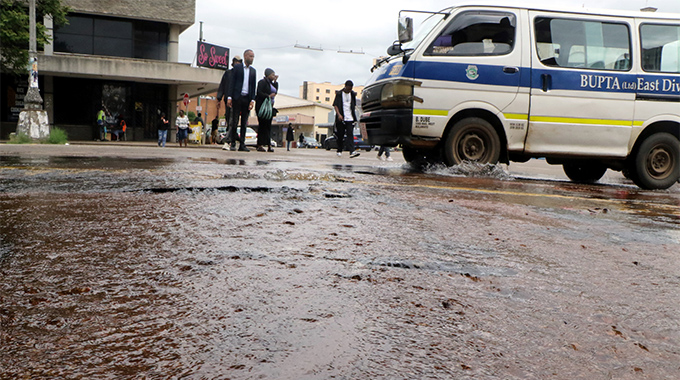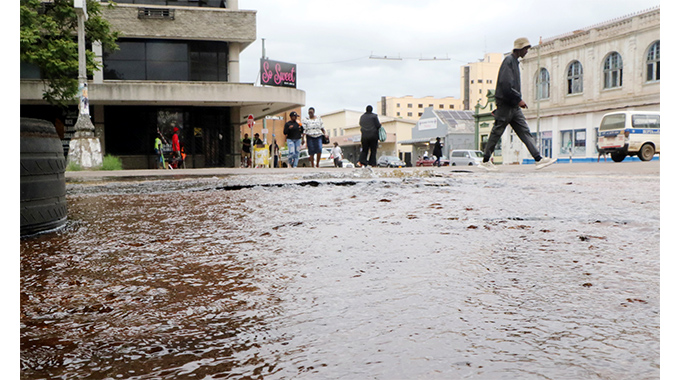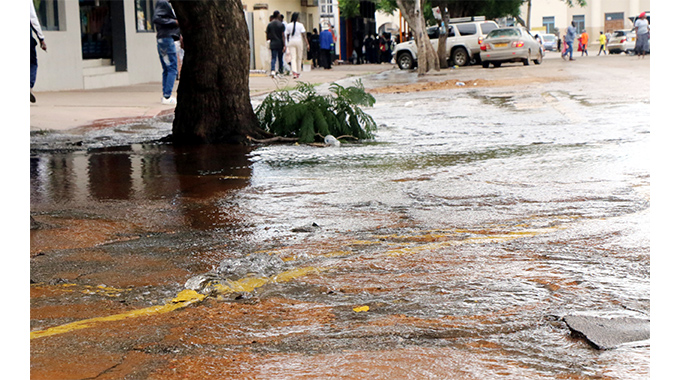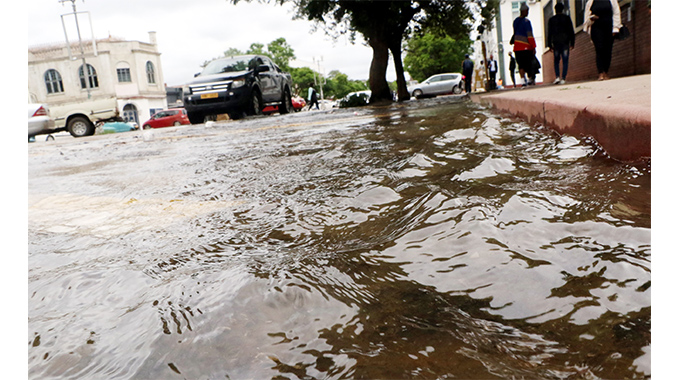Source: Almost 50% of treated Bulawayo water goes to waste! | Sunday News (local news)

Vusumuzi Dube, Online News Editor
WITH Bulawayo grappling with one of its worst water crises in recent years, there are indications that the city council is losing almost half of its treated water before it reaches residents because of obsolete pipes.
This comes amid revelations that the Bulawayo City Council needs more than US$200 million to address some of the challenges that have seen it lose the bulk of its treated water before it reaches consumers.
With most suburbs enduring more than a week without water, the city’s old piping system stands as a formidable obstacle in the quest for reliable water access.
The predicament is further compounded by the region’s below-average rainfall due to the impact of the El Niño phenomenon.

The council’s corporate communications manager, Mrs Nesisa Mpofu, told Sunday News that the city was losing 47 percent of its water, which they classify as non-revenue water, through physical leaks, unauthorised consumption, metering issues and billing errors.
“As of 2024 the City of Bulawayo water balance conducted on non-revenue water was 47 percent and in the break down 30 percent of that was due to leaks and bursts of water pipes along the distribution network and service lines (physical losses), 17 percent translates to the commercial losses (apparent losses).
“The city plans to do a swift repair of bursts and leaks through the provision and adequate availability of plumbing consumables, transport and labour. The current approach is to speedily attend to the above-ground water leakage backlog, with a plan to implement leak detection to tackle leakages before surfacing on the ground thus minimising on the non-revenue water,” said Mrs Mpofu.
She noted that the local authority was working on developing a strategy that would act as a roadmap to systematically reduce water losses and improve the overall water system efficiency.

The council spokesperson said the strategy would help prioritise interventions based on their cost-effectiveness and potential impact, thus ensuring resources were directed towards areas with the most significant non-revenue water reduction potential.
“It should be stressed that all the non-revenue water strategies require funding, of which an estimate of over US$200 million is required to fund capital reinvestment projects, data and billing improvement initiatives, communication and awareness campaigns as well as focused NRW institutional capacity,” said Mrs Mpofu.
She further noted that the council was also in the process of drafting a metering policy and working on a meter replacement programme to improve the billing accuracy which will act as a preliminary indicator of leakages within the system.
“Currently, the city is planning to replace about 5 000 meters of the non-functional meters. Further to this, the city is exploring advanced metering infrastructure for real-time data collection. The city also plans to reduce water loss through reservoir overflows by installing level control mechanisms in the six service reservoirs.
“The city has also set up an online meter reading submission service where customers send their meter readings monthly to reduce the levels of commercial losses.
“There are strides toward managing and regulating the network pressure since high system pressures increase the likelihood of water bursts and leaks. Eleven pressure-reducing valves are to be installed in the high-density suburbs to regulate pressure and also reduce bursts,” said Mrs Mpofu.

The council spokesperson said they were also developing a water distribution system hydraulic model, which was crucial in the reduction of non-revenue water.
She said the hydraulic model will also improve leak detection, aid the prioritisation of repairs and assist in the development of pressure management strategies as well as in planning for the future growth of the city.
“Focus is on district-metered areas to understand what is happening in our network at a micro-level. The city’s water distribution system is divided into 54 discrete district metered areas zones which help pinpoint the location of leaks within a specific district metered areas, allow for targeted leak detection, ensures minimised response time and repair of bursts and leaks and there is optimised pressure within each district metered areas.
“This improves efficiency, allows for a phased implementation approach and involves lower upfront costs compared to a network-wide approach. To further realise these benefits, the city is planning to add three more discrete district-metered areas to its system,” she said.
On illicit connections, water theft and illegal connections, Mrs Mpofu said they were enforcing heavy fines and disconnecting services to properties found flouting regulations.
COMMENTS